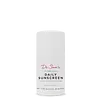What's inside
What's inside
 Key Ingredients
Key Ingredients

 Benefits
Benefits

 Concerns
Concerns

 Ingredients Side-by-side
Ingredients Side-by-side

Water
Skin ConditioningTetrahexyldecyl Ascorbate
AntioxidantDiethylamino Hydroxybenzoyl Hexyl Benzoate
UV FilterDibutyl Adipate
EmollientDimethicone
EmollientEthylhexyl Triazone
UV AbsorberBis-Ethylhexyloxyphenol Methoxyphenyl Triazine
Skin ConditioningC12-15 Alkyl Benzoate
AntimicrobialDicaprylyl Carbonate
EmollientCetearyl Alcohol
EmollientGlycerin
HumectantCoco-Glucoside
CleansingPhenoxyethanol
PreservativeAcrylates/C10-30 Alkyl Acrylate Crosspolymer
Emulsion StabilisingCetearyl Glucoside
EmulsifyingTocopheryl Acetate
AntioxidantHydroxyacetophenone
AntioxidantDisodium EDTA
Benzoic Acid
MaskingXanthan Gum
EmulsifyingCitrus Grandis Peel Oil
MaskingSodium Hydroxide
BufferingDehydroacetic Acid
PreservativeSodium Hyaluronate
HumectantCitrus Limon Peel Oil
MaskingCitrus Aurantium Bergamia Fruit Oil
MaskingPelargonium Graveolens Flower Oil
MaskingEthylhexylglycerin
Skin ConditioningLimonene
PerfumingCitronellol
PerfumingLinalool
PerfumingGeraniol
PerfumingCitral
PerfumingWater, Tetrahexyldecyl Ascorbate, Diethylamino Hydroxybenzoyl Hexyl Benzoate, Dibutyl Adipate, Dimethicone, Ethylhexyl Triazone, Bis-Ethylhexyloxyphenol Methoxyphenyl Triazine, C12-15 Alkyl Benzoate, Dicaprylyl Carbonate, Cetearyl Alcohol, Glycerin, Coco-Glucoside, Phenoxyethanol, Acrylates/C10-30 Alkyl Acrylate Crosspolymer, Cetearyl Glucoside, Tocopheryl Acetate, Hydroxyacetophenone, Disodium EDTA, Benzoic Acid, Xanthan Gum, Citrus Grandis Peel Oil, Sodium Hydroxide, Dehydroacetic Acid, Sodium Hyaluronate, Citrus Limon Peel Oil, Citrus Aurantium Bergamia Fruit Oil, Pelargonium Graveolens Flower Oil, Ethylhexylglycerin, Limonene, Citronellol, Linalool, Geraniol, Citral
Water
Skin ConditioningZinc Oxide
Cosmetic ColorantOctyldodecyl Neopentanoate
EmollientCaprylic/Capric Triglyceride
MaskingEthylhexyl Methoxycinnamate
UV AbsorberNiacinamide
SmoothingGlyceryl Stearate
EmollientPEG-100 Stearate
Cetearyl Alcohol
EmollientButyrospermum Parkii Butter
Skin ConditioningHydroxyethyl Acrylate/Sodium Acryloyldimethyl Taurate Copolymer
Emulsion StabilisingPhenoxyethanol
PreservativeSqualane
EmollientPolyhydroxystearic Acid
EmulsifyingSodium Hyaluronate
HumectantSodium Stearoyl Glutamate
CleansingTocopheryl Acetate
AntioxidantLactic Acid
BufferingCarbomer
Emulsion StabilisingSodium Hydroxymethylglycinate
PreservativePolysorbate 60
Emulsifying1,2-Hexanediol
Skin ConditioningDisodium EDTA
Isostearic Acid
CleansingEthylhexylglycerin
Skin ConditioningSorbitan Isostearate
EmulsifyingBiosaccharide Gum-4
Skin ConditioningCitric Acid
BufferingWater, Zinc Oxide, Octyldodecyl Neopentanoate, Caprylic/Capric Triglyceride, Ethylhexyl Methoxycinnamate, Niacinamide, Glyceryl Stearate, PEG-100 Stearate, Cetearyl Alcohol, Butyrospermum Parkii Butter, Hydroxyethyl Acrylate/Sodium Acryloyldimethyl Taurate Copolymer, Phenoxyethanol, Squalane, Polyhydroxystearic Acid, Sodium Hyaluronate, Sodium Stearoyl Glutamate, Tocopheryl Acetate, Lactic Acid, Carbomer, Sodium Hydroxymethylglycinate, Polysorbate 60, 1,2-Hexanediol, Disodium EDTA, Isostearic Acid, Ethylhexylglycerin, Sorbitan Isostearate, Biosaccharide Gum-4, Citric Acid
Ingredients Explained
These ingredients are found in both products.
Ingredients higher up in an ingredient list are typically present in a larger amount.
Cetearyl alcohol is a mixture of two fatty alcohols: cetyl alcohol and stearyl alcohol. It is mainly used as an emulsifier. Emulsifiers help prevent the separation of oils and products. Due to its composition, it can also be used to thicken a product or help create foam.
Cetearyl alcohol is an emollient. Emollients help soothe and hydrate the skin by trapping moisture.
Studies show Cetearyl alcohol is non-toxic and non-irritating. The FDA allows products labeled "alcohol-free" to have fatty alcohols.
This ingredient is usually derived from plant oils such as palm, vegetable, or coconut oils. There is debate on whether this ingredient will cause acne.
Due to the fatty acid base, this ingredient may not be Malassezia folliculitis safe.
Learn more about Cetearyl AlcoholDisodium EDTA plays a role in making products more stable by aiding other preservatives.
It is a chelating agent, meaning it neutralizes metal ions that may be found in a product.
Disodium EDTA is a salt of edetic acid and is found to be safe in cosmetic ingredients.
Learn more about Disodium EDTAEthylhexylglycerin (we can't pronounce this either) is commonly used as a preservative and skin softener. It is derived from glyceryl.
You might see Ethylhexylglycerin often paired with other preservatives such as phenoxyethanol. Ethylhexylglycerin has been found to increase the effectiveness of these other preservatives.
Phenoxyethanol is a preservative that has germicide, antimicrobial, and aromatic properties. Studies show that phenoxyethanol can prevent microbial growth. By itself, it has a scent that is similar to that of a rose.
It's often used in formulations along with Caprylyl Glycol to preserve the shelf life of products.
Sodium Hyaluronate is hyaluronic acid's salt form. It is commonly derived from the sodium salt of hyaluronic acid.
Like hyaluronic acid, it is great at holding water and acts as a humectant. This makes it a great skin hydrating ingredient.
Sodium Hyaluronate is naturally occurring in our bodies and is mostly found in eye fluid and joints.
These are some other common types of Hyaluronic Acid:
Learn more about Sodium HyaluronateTocopheryl Acetate is AKA Vitamin E. It is an antioxidant and protects your skin from free radicals. Free radicals damage the skin by breaking down collagen.
One study found using Tocopheryl Acetate with Vitamin C decreased the number of sunburned cells.
Tocopheryl Acetate is commonly found in both skincare and dietary supplements.
Learn more about Tocopheryl AcetateWater. It's the most common cosmetic ingredient of all. You'll usually see it at the top of ingredient lists, meaning that it makes up the largest part of the product.
So why is it so popular? Water most often acts as a solvent - this means that it helps dissolve other ingredients into the formulation.
You'll also recognize water as that liquid we all need to stay alive. If you see this, drink a glass of water. Stay hydrated!
Learn more about Water